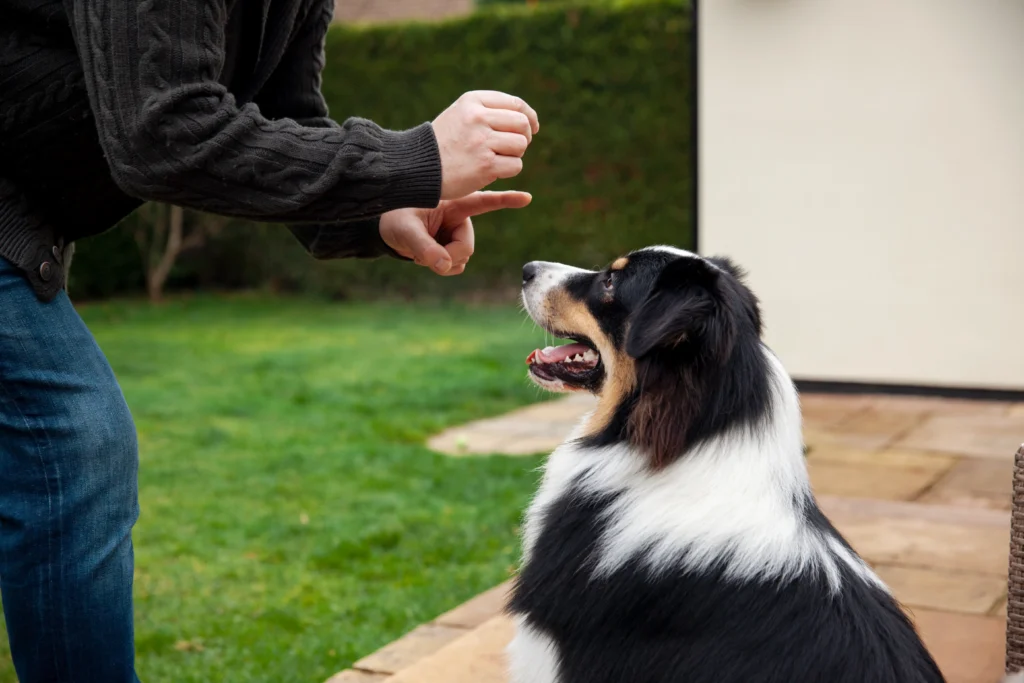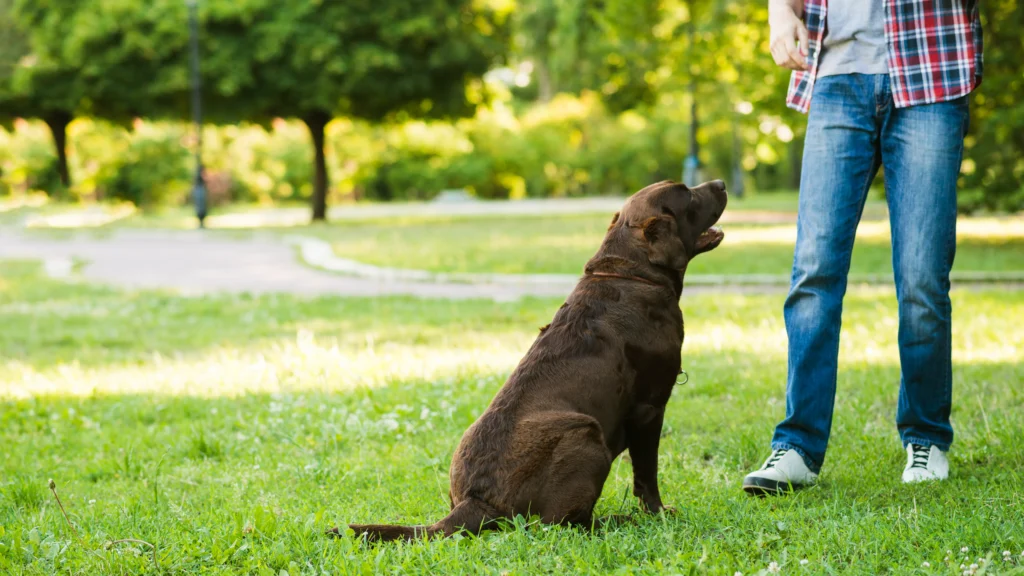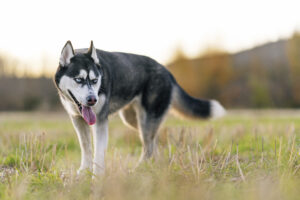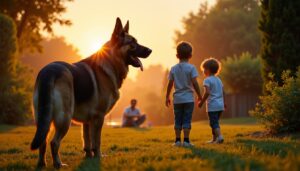Introduction
If you’re a dog owner struggling with a reactive dog, you’ve likely encountered a flood of conflicting advice. Reactive dog training has become a hot topic in the pet community, with countless trainers, blogs, and YouTube channels offering solutions. But how much of what you’ve heard is actually true?
As someone who has worked with reactive dogs for years, I’ve seen firsthand how misinformation can harm both dogs and their devoted owners. Reactive dog behavior isn’t just frustrating—it can be heartbreaking to watch your beloved pet lunge, bark, or growl when they encounter certain triggers. Whether your dog reacts to other dogs, strangers, or environmental stimuli, finding effective reactive dog training methods is crucial.
In this comprehensive guide, we’ll bust five common myths about reactive dog training that some trainers might not want you to know. Understanding these misconceptions is the first step toward actually helping your dog overcome reactivity issues. We’ll explore evidence-based approaches to dealing with a reactive dog and provide practical tips for training a reactive dog with compassion and effectiveness.
Understanding Dog Reactivity: The Basics

Before diving into the myths, let’s clarify what we mean by “reactive dog.” Reactive dog behavior refers to an overreaction to certain stimuli in the environment. This isn’t just about aggression—reactivity can manifest as:
- Lunging toward other dogs
- Excessive barking at strangers
- Growling at environmental triggers
- Freezing or cowering in fear
- Whining or displaying anxious behaviors
Reactive dog training addresses these behaviors by identifying triggers and working to change the dog’s emotional response. The goal isn’t to suppress reactions but to help your dog feel more comfortable and confident in previously triggering situations.
Many reactive dogs aren’t aggressive at all—they’re anxious, fearful, or overstimulated. Understanding this distinction is crucial for overcoming dog reactivity with appropriate training methods.
Myth #1: “Your Dog Is Just Being Dominant or Stubborn”
One of the most harmful myths in reactive dog training is the belief that reactivity stems from dominance or stubbornness. This outdated view suggests that dogs who bark at other dogs or lunge at strangers are attempting to assert control or deliberately disobeying commands.
The Truth:
Most reactive dog behavior is rooted in fear, anxiety, or past trauma—not dominance. When a dog lunges or barks at another dog, they’re typically trying to increase distance from something that makes them uncomfortable, not attempting to dominate the situation.
Dr. Sophia Yin, a renowned veterinary behaviorist, emphasized that dominance-based explanations of dog behavior often misinterpret normal canine communication and stress responses. Modern animal behavior science has largely debunked the notion that domestic dogs are constantly trying to achieve “alpha” status.

What Works Instead:
Rather than focusing on asserting your dominance, successful reactive dog training requires:
- Understanding triggers: Identify exactly what causes your dog’s reactive behavior.
- Reading body language: Learn to recognize subtle signs of stress before a full reaction occurs.
- Addressing emotional state: Work on changing how your dog feels about triggers, not just suppressing reactions.
A study published in the Journal of Veterinary Behavior found that dogs treated with positive reinforcement methods for reactivity showed greater improvement than those trained with punishment-based approaches.
Myth #2: “Reactive Dogs Need to Be Punished to Learn”
Another dangerous myth is that reactive dogs need firm correction or punishment to understand their behavior is unacceptable. Some trainers might recommend shock collars, prong collars, or physical corrections to stop a dog from lunging at other dogs.
reactive dog training
The Truth:
Punishment often worsens reactive dog behavior by increasing fear and anxiety—the very emotions driving the reactivity in the first place. When your dog is already in a stressed state, adding punishment creates a negative association with the trigger, potentially intensifying the reaction next time.
What Works Instead:
Positive reinforcement for reactive dogs is not only more humane but also more effective in the long term:
- Counter-conditioning: Teaching your dog to associate triggers with positive experiences instead of fear.
- Desensitization: Gradually exposing your dog to triggers at a distance where they can remain calm.
- Reward-based training: Reinforcing calm behavior with treats, praise, or play.
The American Veterinary Society of Animal Behavior (AVSAB) officially recommends against using punishment for behavior modification, especially for fear-based behaviors like most reactivity.
Behaviorist Dr. Patricia McConnell notes: “Punishment may stop behavior, but it doesn’t teach dogs what to do instead. With reactive dogs, we need to teach alternative behaviors, not just suppress the unwanted ones.”
reactive dog training
Myth #3: “Your Dog Needs to Socialize More With Other Dogs”
Many well-meaning people suggest that the solution to dog reactivity is more exposure to other dogs. “They just need to socialize more!” is common advice that can actually backfire dramatically.

The Truth:
Forcing a reactive dog into social situations they’re not ready for can traumatize them further and intensify reactive behaviors. True socialization happens when a dog feels safe and can have positive experiences—not when they’re overwhelmed and reacting.
While socialization is crucial for puppies, adult reactive dogs need a more structured approach. Reactive dog socialization tips must consider the dog’s current emotional state and threshold for stress.
What Works Instead:
Structured exposure is the key to helping reactive dogs:
- Controlled environments: Begin with predictable settings where you can maintain distance from triggers.
- Parallel walking: Walking beside another calm dog with sufficient distance to prevent reactions.
- Careful management: Using barriers, distance, or timing to ensure your dog stays under threshold.
A comprehensive study on canine behavior at the University of Bristol found that quality of social interactions matters more than quantity for adult dogs with reactivity issues.
For many reactive dogs, specialized training classes designed specifically for reactive dogs provide a safer introduction to social settings than dog parks or casual meet-ups.
Myth #4: “Your Dog Will Grow Out of Reactivity”
Some trainers might suggest that reactivity is just a phase, especially in younger dogs. While waiting it out might seem easier than implementing behavior modification for reactive dogs, this approach rarely works.
The Truth:
Without intervention, reactive behavior typically worsens over time. Each time your dog practices the reactive behavior—lunging, barking, growling—that response becomes more ingrained. Additionally, stress hormones released during these episodes can take up to 72 hours to fully dissipate, meaning your dog may become progressively more sensitive.

What Works Instead:
Proactive training and management strategies:
- Early intervention: Address signs of reactivity as soon as you notice them.
- Consistency: Use the same cues and rewards across all training sessions.
- Progressive training: Gradually decrease distance from triggers as your dog shows comfort.
Veterinary behaviorist Dr. Karen Overall emphasizes that behavior modification plans should be implemented as soon as reactivity appears, noting that these behaviors rarely resolve spontaneously without structured intervention.
Myth #5: “A Tired Dog Is a Good Dog—Just Exercise More”
While exercise is important for all dogs, the common advice to “just tire them out” oversimplifies the complex issue of reactive dog behavior. Many owners are told that their dog’s reactivity stems from excess energy that needs to be burned off.
The Truth:
Physical exercise alone won’t resolve reactivity issues and can sometimes make them worse. An overstimulated, tired dog may have fewer mental resources to cope with stressful situations, potentially increasing reactivity.
What Works Instead:
A balanced approach that includes:
- Mental stimulation: Puzzle toys, sniff walks, and training games that engage your dog’s brain.
- Appropriate physical exercise: Regular activity tailored to your dog’s age, breed, and health status.
- Relaxation training: Teaching your dog to settle and remain calm on cue.
Dr. Emily Blackwell’s research indicates that mental enrichment may be even more important than physical exercise for reducing problem behaviors in many dogs.
Effective Strategies for Training a Reactive Dog
Now that we’ve debunked these common myths, let’s explore evidence-based approaches to reactive dog training:
1. Management First
Before diving into training, implement management strategies to prevent rehearsal of reactive behaviors:
- Choose walking routes carefully to avoid known triggers
- Use appropriate equipment like front-clip harnesses or head halters for better control without punishment
- Create distance between your dog and triggers whenever possible
- Consider a “Please Give Me Space” yellow ribbon or vest for your dog
2. Establish Threshold Distance
Find the distance at which your dog notices triggers but can still respond to you. This is your starting point for training:
- Begin training at this distance and gradually decrease as your dog improves
- Watch for subtle stress signals like lip licking, yawning, or stiffening
- Stay under threshold to ensure effective learning
3. Counter-Conditioning and Desensitization
These scientific behavior modification techniques form the foundation of effective reactive dog training:
- Counter-conditioning: Change your dog’s emotional response by pairing triggers with high-value treats
- Desensitization: Gradually increase exposure while maintaining emotional comfort
The “Look at That” game, developed by trainer Leslie McDevitt, combines these approaches by rewarding dogs for calmly looking at triggers and then back to their handler.
4. Build Alternative Behaviors
Train specific behaviors your dog can perform instead of reacting:
- Emergency U-turn: Teaching your dog to quickly turn away from triggers
- Find it: Scattering treats on the ground to engage your dog’s nose instead of eyes
- Touch: Having your dog touch their nose to your hand for quick redirection
5. Consider Professional Help
Some reactive dogs benefit from professional intervention:
- Certified Professional Dog Trainers with experience in reactivity
- Veterinary Behaviorists who can assess medical factors and prescribe medication if needed
- Group Classes specifically designed for reactive dogs
Dr. Amy Cook’s “Play Way” method and Grisha Stewart’s “BAT 2.0” are two specialized approaches taught by certified trainers that have shown remarkable success in overcoming dog reactivity.
Leash Reactivity: A Special Challenge
Leash reactivity deserves special attention as it’s one of the most common forms of reactive behavior. Many dogs who are perfectly fine off-leash become reactive when restrained by a leash.
Why Leashes Complicate Things:
- Frustration: Dogs can’t engage in normal greeting behaviors
- Tension: Handler anxiety travels down the leash
- Trapped feeling: Dogs can’t create distance from threats
Effective Reactive Dog Leash Training:
- Loose leash walking practice in non-triggering environments first
- Emergency U-turns to create distance from triggers
- Engage-disengage game to build tolerance for triggers while on leash
- Relaxation protocols specifically for leashed situations
A study in Applied Animal Behaviour Science found that dogs who received specific training for leash reactivity showed significant improvement compared to control groups.
The Role of Medication in Reactive Dog Training
While training is essential, some reactive dogs benefit from temporary or ongoing medication support:
- Anti-anxiety medications can help dogs whose reactivity stems from severe anxiety
- Situational medications might be useful for unavoidable high-stress events
- Supplements like L-theanine or specific probiotics show promise in research studies
Always consult with a veterinary behaviorist before considering medication. It’s not admitting defeat—it’s providing your dog with all available tools for success.
reactive dog training
Real-Life Success Stories
Max’s Journey: From Lunging to Looking
Max, a three-year-old shepherd mix, would lunge and bark ferociously at other dogs on walks. His owner implemented counter-conditioning techniques and management strategies:
- Began working at threshold distance (initially 100 feet from other dogs)
- Used high-value treats when other dogs appeared
- Practiced “Look at That” and “Find It” games
- Gradually decreased distance as Max improved
- reactive dog training
After six months of consistent training, Max could calmly walk past other dogs at a distance of 10 feet, occasionally glancing at his owner for treats rather than reacting to the trigger.
Bella’s Transformation: Overcoming Fear of Strangers
Bella, a small terrier mix, would growl and nip at visitors. Her owners worked with a certified trainer on:
- Counter-conditioning to human approach
- Teaching a reliable “Go to Place” command
- Gradual exposure to strangers at comfortable distances
- Positive reinforcement for calm behavior
- reactive dog training
Within three months, Bella could remain relaxed on her bed when visitors entered, eventually accepting treats from familiar guests.
Handling Setbacks in Reactive Dog Training
Progress isn’t always linear. Expect occasional setbacks:
- Keep a training journal to identify patterns in triggers and reactions
- Adjust your training plan if you’re not seeing progress after several weeks
- Remember that recovery time matters—don’t train too frequently
- Celebrate small victories along the way
Tips for Reactive Dog Owners: Taking Care of Yourself
Training a reactive dog can be emotionally draining. Remember to:
- Find supportive communities of other reactive dog owners
- Practice self-compassion when walks don’t go as planned
- Set realistic expectations for progress
- Take breaks when needed—it’s okay to skip a walk occasionally
Conclusion: The Path Forward for You and Your Reactive Dog
Training a reactive dog requires patience, consistency, and evidence-based methods. By understanding the truth behind common myths, you’re already ahead of the game.
Remember these key takeaways for successful reactive dog training:
- Reactivity is usually fear-based, not dominance or stubbornness
- Positive reinforcement works better than punishment
- Controlled exposure, not forced socialization, is the key
- Consistency and early intervention prevent worsening
- Mental enrichment is as important as physical exercise
Most importantly, don’t lose hope. With the right approach, most reactive dogs show significant improvement over time. The journey may be challenging, but strengthening your relationship with your dog through compassionate, effective training is worth every effort.
For more information on dog training methods and equipment that can help with reactive behavior, visit our comprehensive dog training guide and dog accessories collection that can support your training efforts.
Have you tried any of these methods with your reactive dog? What’s been your experience? Share your story in the comments below!
Additional Resources for Reactive Dog Training
- American College of Veterinary Behaviorists
- International Association of Animal Behavior Consultants
- Certification Council for Professional Dog Trainers
- Fear Free Pets
- “Control Unleashed” by Leslie McDevitt
- “Behavior Adjustment Training 2.0” by Grisha Stewart
Disclaimer: This article is for informational purposes only. For severe behavioral issues, consult with a certified professional dog trainer or veterinary behaviorist.






